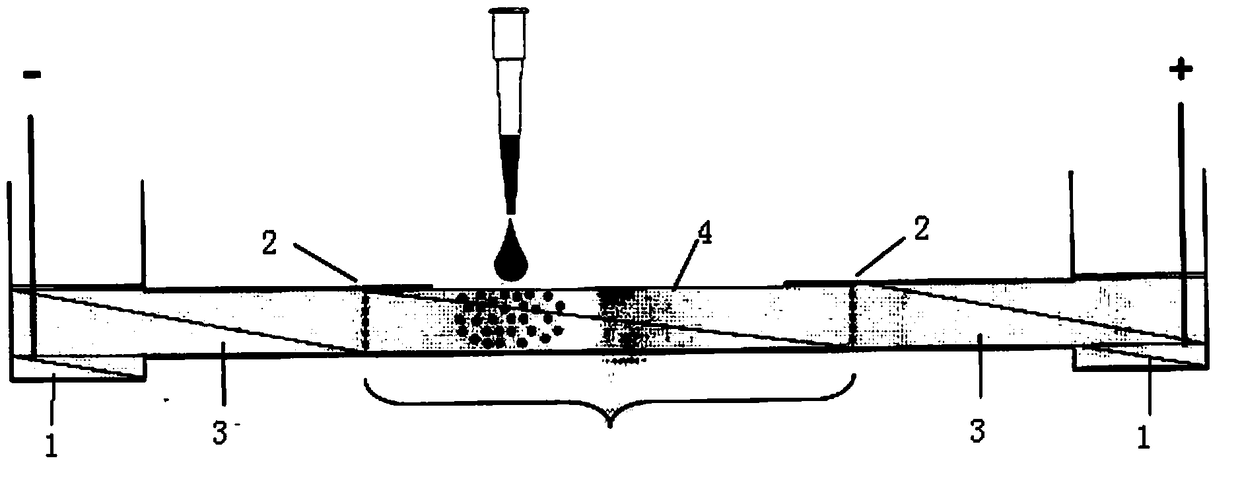A fixation method to maintain cell stress balance
A method of immobilization, the technique of cells, applied in isotropic immobilization on/in an organic carrier
- Summary
- Abstract
- Description
- Claims
- Application Information
AI Technical Summary
Problems solved by technology
Method used
Image
Examples
Embodiment 1
[0021] Detection of the effect of trypsin digestion on the binding state of cultured normal human embryonic lung fibroblasts (HFLF) SSBs (detection of 3 types: RPA32, RPA70 and POT1):
[0022] (1) Use 0.25% trypsin digestion to obtain normal human embryonic lung fibroblasts in the exponential growth phase at a cell concentration of 2×10 7 The HFLF.
[0023] (2) The cells were rinsed once by centrifugation with phosphate buffered saline (PBS). Add 200 μl of PBS to the discarded supernatant cell mass, drop it on the bottom of a 3.5 cm culture dish, and suspend the cells at the bottom of the culture dish with a pipette tip. The solution was evenly spread over the bottom of the entire culture dish.
[0024] (3) Place the petri dish on ice, use 254nm UV lamp at 1.84W / cm 2 Intensity irradiation, total dose 165.6J / cm 2 .
[0025] (4) Wash the irradiated cells in the culture dish with 20ml PBS and collect them in a 50ml centrifuge tube.
[0026] (5) The collected cells were centr...
Embodiment 2
[0028] (1) Obtain mouse embryonic stem cells in the exponential growth phase with 0.25% trypsin digestion method, and the cell concentration is 2×10 7 .
[0029] (2) The cells were rinsed once by centrifugation with phosphate buffered saline (PBS). Add 200 μl of PBS to the discarded supernatant cell mass, drop it on the bottom of a 3.5 cm culture dish, and suspend the cells at the bottom of the culture dish with a pipette tip. The solution was evenly spread over the bottom of the entire culture dish.
[0030] (3) Place the petri dish on ice, use 254nm UV lamp at 1.84W / cm 2 Intensity irradiation, total dose 165.6J / cm 2 .
[0031] (4) Wash the irradiated cells in the culture dish with 20ml PBS and collect them in a 50ml centrifuge tube.
[0032] (5) The collected cells were centrifuged at 260 g for 3 minutes, and after discarding the supernatant, 200 μl of 4% paraformaldehyde was added for pre-fixation for 1 second, and 46 ml of PBS was added to stop the fixation.
Embodiment 3
[0034] (1) Obtain tumor cells in the exponential growth phase with 0.25% trypsin digestion method, and the cell concentration is 2×10 7 .
[0035] (2) The cells were rinsed once by centrifugation with phosphate buffered saline (PBS). Add 200 μl of PBS to the discarded supernatant cell mass, drop it on the bottom of a 3.5 cm culture dish, and suspend the cells at the bottom of the culture dish with a pipette tip. The solution was evenly spread over the bottom of the entire culture dish.
[0036] (3) Place the petri dish on ice, use 254nm UV lamp at 1.84W / cm 2 Intensity irradiation, total dose 165.6J / cm 2 .
[0037] (4) Wash the irradiated cells in the culture dish with 20ml PBS and collect them in a 50ml centrifuge tube.
[0038] (5) The collected cells were centrifuged at 260 g for 8 minutes, and after discarding the supernatant, 200 μl of 4% paraformaldehyde was added for pre-fixation for 6 seconds, and 46 ml of PBS was added to stop the fixation.
[0039] Cell in situ e...
PUM
 Login to View More
Login to View More Abstract
Description
Claims
Application Information
 Login to View More
Login to View More - R&D
- Intellectual Property
- Life Sciences
- Materials
- Tech Scout
- Unparalleled Data Quality
- Higher Quality Content
- 60% Fewer Hallucinations
Browse by: Latest US Patents, China's latest patents, Technical Efficacy Thesaurus, Application Domain, Technology Topic, Popular Technical Reports.
© 2025 PatSnap. All rights reserved.Legal|Privacy policy|Modern Slavery Act Transparency Statement|Sitemap|About US| Contact US: help@patsnap.com


